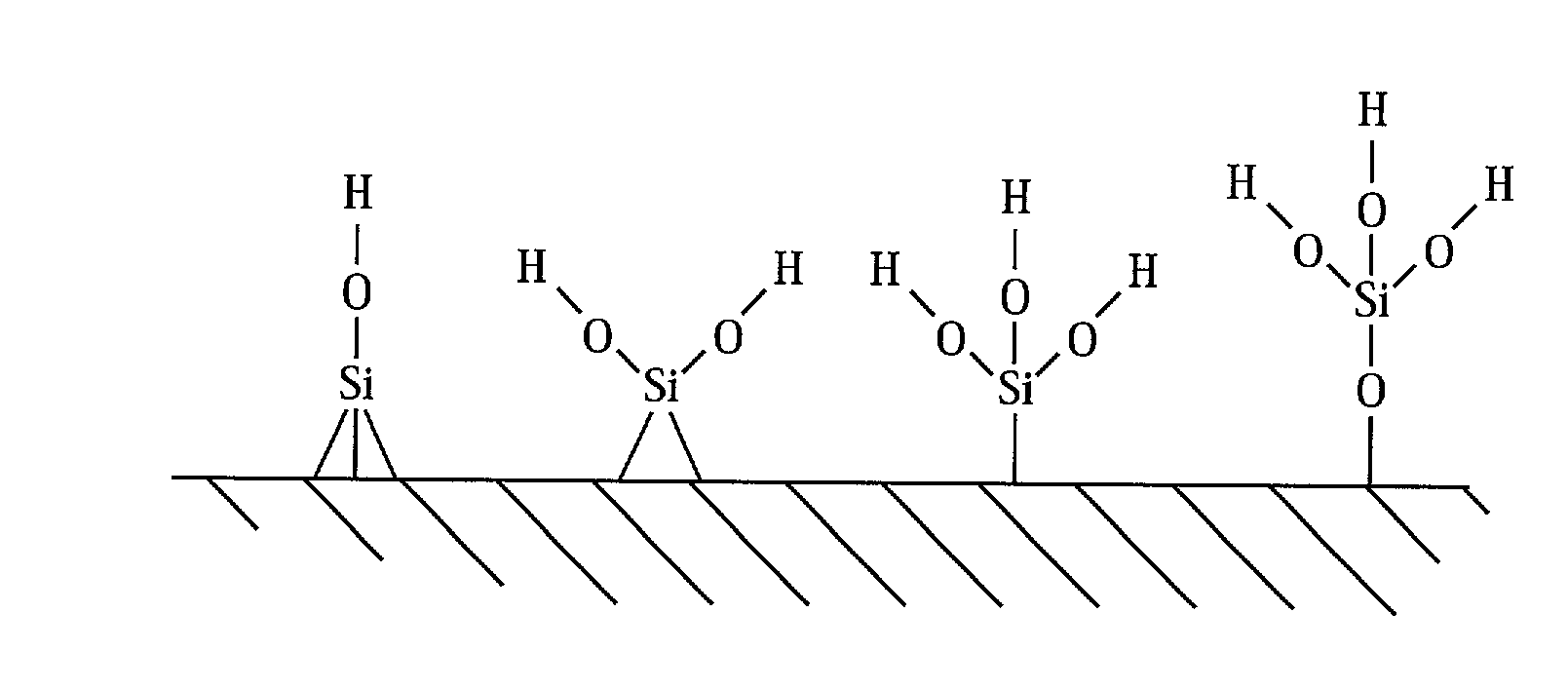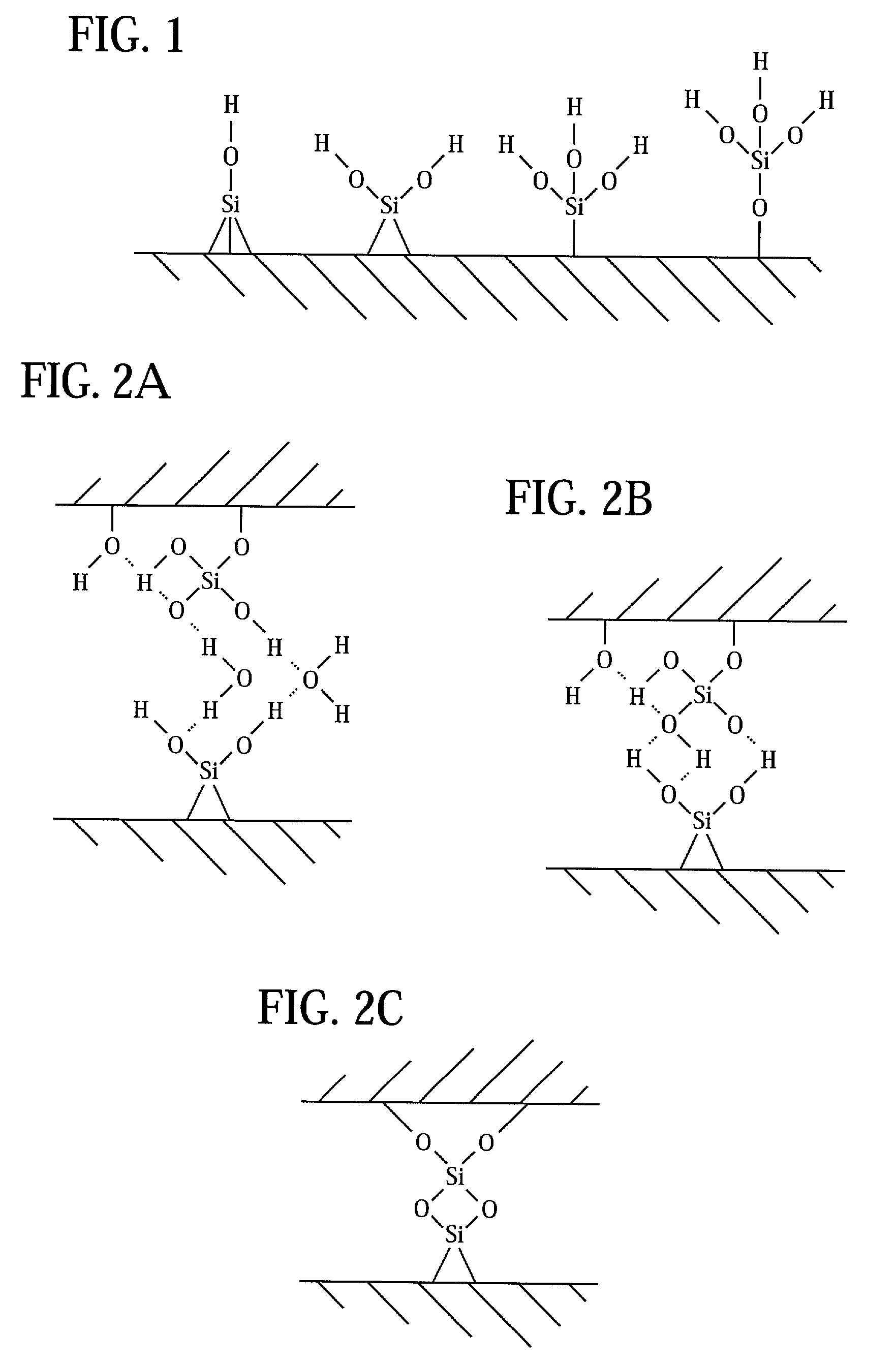Direct bonding of articles containing silicon
a technology of silicon-containing articles and opposing surfaces, which is applied in the direction of adhesive processes with surface pretreatment, instruments, chemistry apparatuses and processes, etc., can solve the problems of high temperature on polymers, polymer resistance to high vacuum, and inability to bond in relatively moderate cycles. achieve the effect of high bond strength
- Summary
- Abstract
- Description
- Claims
- Application Information
AI Technical Summary
Benefits of technology
Problems solved by technology
Method used
Image
Examples
example 1
[0039] Bonding of High Purity Fused Silica Surfaces
[0040] Corning product code 7980 HPFS.RTM. bars were bound and the bonding between the bars at a temperature of 200.degree. C. was strong enough so that one of the bars failed at 160.9 psi.
example 2
[0041] Bonding of Polarcor.TM. Surfaces
[0042] Polarcor.TM. is a borosilicate glass. A proprietary polarization process makes the outer surfaces act as polarizers. Active polarization occurs in the outer 20-50 microns of the glass surface. Polarcor bars were bonded together at a bonding temperature of about 200.degree. C. A first set of samples resulted in the bond between the bars delaminating at 45.8 psi. A second set of samples was annealed to about 500.degree. C., and these bars failed in tension at 127.9 psi.
PUM
| Property | Measurement | Unit |
|---|---|---|
| temperature | aaaaa | aaaaa |
| roughness | aaaaa | aaaaa |
| flatness | aaaaa | aaaaa |
Abstract
Description
Claims
Application Information
 Login to View More
Login to View More - R&D
- Intellectual Property
- Life Sciences
- Materials
- Tech Scout
- Unparalleled Data Quality
- Higher Quality Content
- 60% Fewer Hallucinations
Browse by: Latest US Patents, China's latest patents, Technical Efficacy Thesaurus, Application Domain, Technology Topic, Popular Technical Reports.
© 2025 PatSnap. All rights reserved.Legal|Privacy policy|Modern Slavery Act Transparency Statement|Sitemap|About US| Contact US: help@patsnap.com



